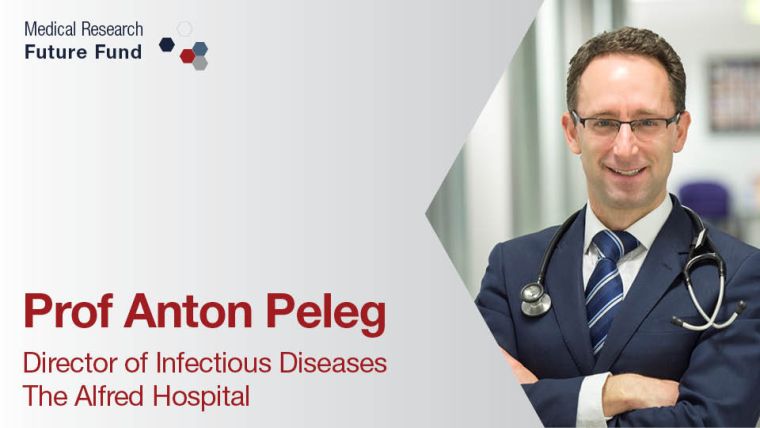
Antibiotic resistant superbugs threaten to undo many of the gains of modern medicine
Superbugs cause previously curable infectious diseases to become untreatable and spread.
These ‘nasty, challenging infections’ are a big problem in Australian Hospitals, says Professor Anton Peleg. Anton is the Director of the Department of Infectious Diseases at The Alfred and Monash University, Melbourne.
‘We’re seeing patients being infected with bacteria that are resistant to all the antibiotics that we currently have.’
Superbugs spread rapidly and cause severe infections and death.
More data gives better outcomes
Anton says he could improve patient outcomes if he could quickly assess all the available data about the patient and the infecting bacteria. But the sheer amount of data is more than a single doctor can process.
‘When a doctor assesses a new patient in the hospital, we take a history and do an examination. They might have a blood test and some X-rays. The doctor processes all that information in their brain.
‘As a doctor, I probably process 80-100 of these data points when I decide on the next step of a patient’s treatment.
‘But we’ve discovered 80-120,000 data points occur during every patient hospital admission.
‘In an ideal world, every diagnosis, management decision, and treatment would be personalised. We want to be able to do that for each patient based on all that available data.’
Harnessing the power of new technologies
With so much data to be analysed, only a machine processing approach can achieve this goal.
The Superbug AI Flagship will combine data held in different electronic information systems for the first time. These include:
• electronic patient records
• genetic fingerprints of superbugs
• management systems tracking patient movements
The team will also develop computer processing steps to analyse patterns in this data. These steps will become the artificially intelligent SuperbugAI algorithm.
The new algorithm must be tested to see if it works. To do this, the team will first use cases where they already know the patient outcomes.
‘For a cohort of over 2000 patients who had serious bloodstream infection we collected the bacteria that caused their infections. We are sequencing the genetic code for all these bacteria types.’
Using this data, the team will ask the algorithm to predict outcomes. For example, which treatment would give the best outcome for a patient with an infection carrying a specific resistance gene? The team will compare the machine’s answers with the known outcomes.
‘Once the algorithm looks like it is strong, we can run it with new cases. As more and more patients come into the system its prediction power and precision will improve.’
An innovative outbreak alert system
Superbugs can spread to different parts of the hospital and patients in many ways. A patient can carry a superbug when they are moved. Superbugs can transfer to the environment and then to another patient or health care worker.
The antibiotic resistant gene inside one kind of superbug can transfer to another kind of superbug through mobile genetic material called plasmids.
The SuperbugAI Flagship will track patients and superbugs moving through the hospital. This information will rapidly alert staff that a superbug infection is spreading.
Transforming hospital health care
‘This is the start of what we see as an amazing opportunity for health care transformation using artificial intelligence,’ Anton says.
‘The Superbug AI Flagship could improve patient outcomes in all Australian hospitals.’
The Genomics, Digital Health and Machine Learning: Superbug AI Flagship project is supported by $3.4 million from the MRFF.




